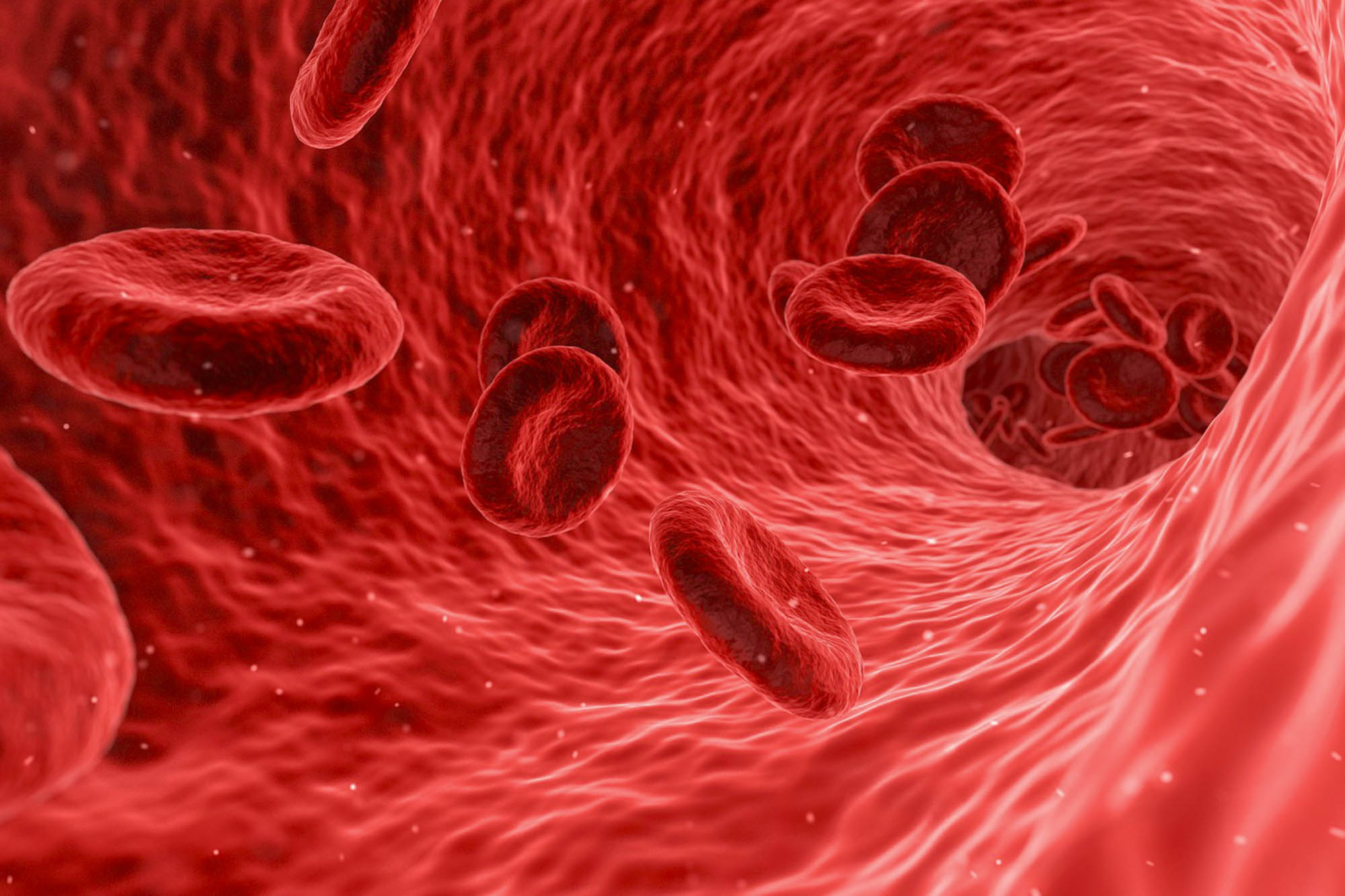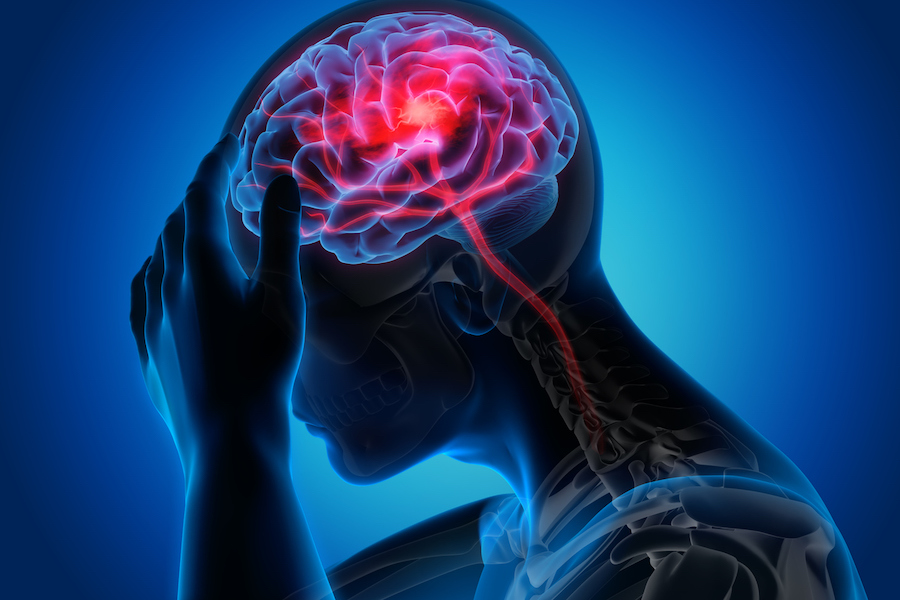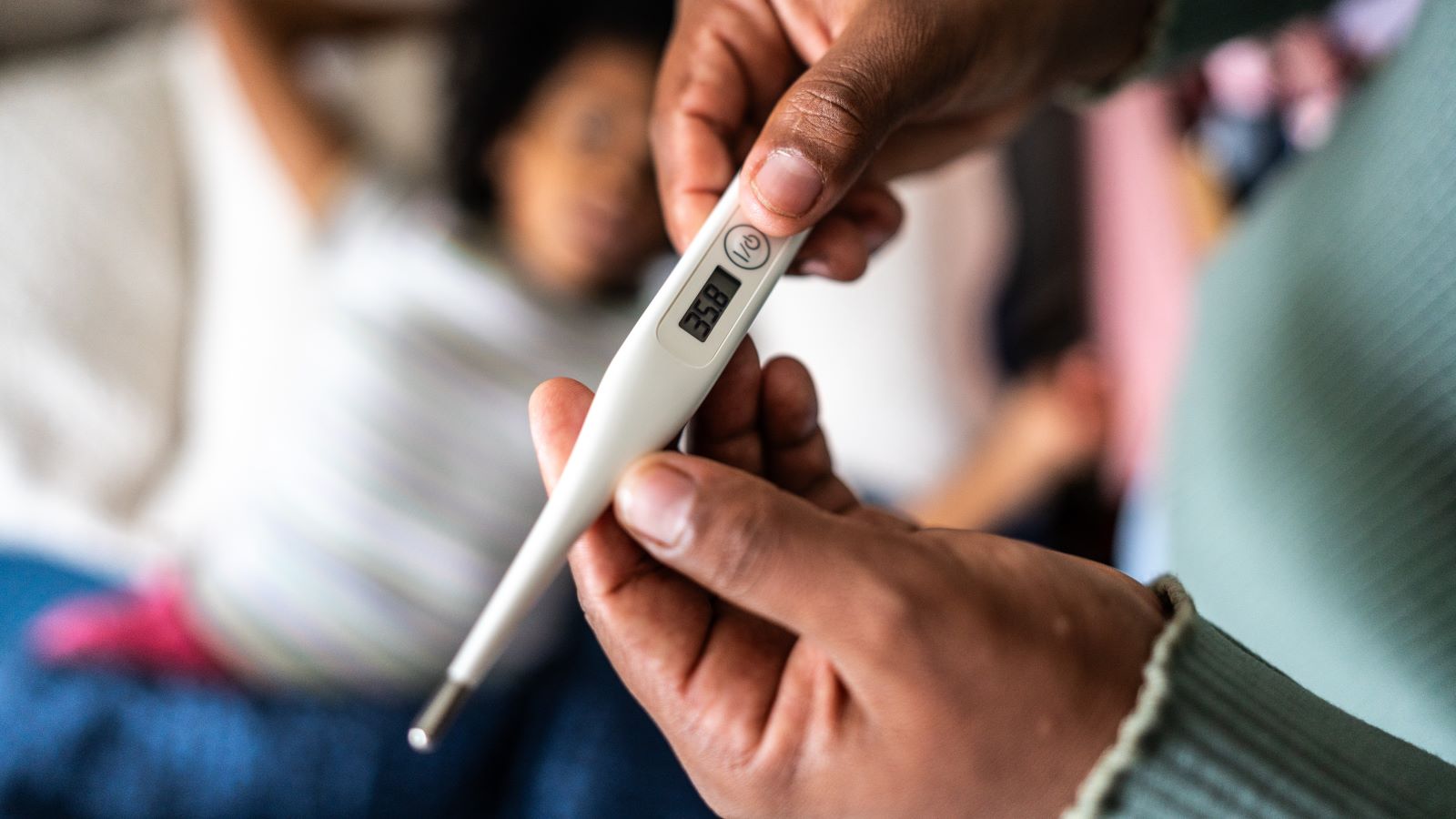There are a variety of complications1 typically associated with sickle cell disease. Some complications are more severe than others and require immediate medical attention.
Download the Children’s Healthcare of Atlanta Sickle Cell Disease Handbook for Patients and Families (English | Spanish)2

Severe anemia requires medical attention. The symptoms of severe anemia are fatigue, shortness of breath, dizziness, and irregular heartbeat.

People with SCD are at higher risk for having a stroke. Call 9-1-1 for any of these warning signs of a stroke: sudden weakness, numbness on one side of the body, confusion, or trouble speaking, seeing, or walking.

A temperature of 101°F or higher is considered a fever. It is often a sign of an infection and requires immediate medical attention. Other symptoms might include cough, chills, aches, tiredness, headache, vomiting, or diarrhea.

ACS occurs when sickled cells clump together in the lungs and can become life-threatening if not treated right away. Symptoms include trouble breathing, fever of 101°F or higher, couch, chest pain, low oxygen level, and back/low belly pain.
Download educational handouts here (English | Spanish)
Acute chest syndrome (ACS) is a lung problem that happens in people who have sickle cell disease. It looks like pneumonia on a chest X-ray. It can be caused by 1 or more of these:
ACS can get worse quickly and become life-threatening. If you or someone you know with SCD experiences any of the symptoms below, get medical help right away. Call your sickle cell disease Clinic and head to the emergency department (ED).
Symptoms:
Most people with sickle cell disease have some anemia (low red blood cell count or low hemoglobin). This means the body has fewer red blood cells to carry oxygen. Anemia can make a person feel tired when they exercise or do physical work. The anemia may become worse with infection or other illnesses.
Symptoms:
Call the Sickle Cell Disease Clinic right away if you or someone you know with SCD experiences these symptoms and be prepared to head to the hospital or clinic. A person with SCD with these symptoms needs their hemoglobin level checked and may need a blood transfusion if the hemoglobin level is too low. Transfusion helps deliver oxygen to the body so it can keep working well.
Download educational handouts here (English | Spanish)
Aplastic crisis happens when the body stops making red blood cells (RBCs) for a short time. This causes a drop in a person’s hemoglobin level (red blood count) for a short time. For people living with sickle cell disease, many RBCs are broken down each day. This means that many more RBCs need to be made each day.
Several types of infections can prevent bone marrow from making RBCs. Most happen when children are old enough to go to school.
Symptoms:
Many of the symptoms come from a low RBC count. This may include:
Download educational handouts here (English | Spanish)
Avascular necrosis (AVN) is a well-known complication of sickle cell disease that affects up to 10% of people with sickle cell disease and can happen with all sickle cell types. AVN is a type of bone damage that most often starts during the teen years and becomes more common with age. It is caused by a lack of blood supply to the bone.
Symptoms:
Many people with early AVN may not have any symptoms. As AVN gets worse, they may experience some or all of these symptoms:
Download educational handouts here (English | Spanish)
What is jaundice?
Jaundice is when the white part of the eye and skin turn yellow.
What are gallstones?
The gallbladder is a sack or pouch under the liver. It is in the upper right part of the belly. Gallstones are small stones that form in the gallbladder when bile hardens into a solid form.
Gallstones are most often not harmful. If they get stuck in the tube that leaves the gallbladder, pain may occur. Infection can occur if the tube gets blocked by stones. This can affect other organs nearby, like the pancreas.
Symptoms:
Fever or infection can be an emergency. Seek medical attention right away!
Download educational handouts here (English | Spanish)
A person has a fever if their temperature is 101°F or higher. It is often the first sign of an infection, and it is important to pay attention to temperature measurement in order to treat infections quickly.
An infection happens when germs (bacteria or viruses) are not recognized by the body. These germs continue to grow and spread. This causes an infection. Infections are a big danger to people with sickle cell disease. People living with SCD have a higher chance of getting certain infections than those who do not have sickle cell disease and can die from infections caused by bacteria if not treated quickly. Usual childhood viral infections, such as common cold or strep throat, are not more common but can cause sickle complications.
Additional Symptoms:
Preventing Infection:
Hepatic sequestration happens when red blood cells get trapped inside the liver instead of the blood. It requires immediate medical attention, so call your Sickle Cell Disease Clinic or go to the nearest emergency department (ED) right away if you or someone you know with sickle cell disease experiences any of the symptoms.
Symptoms:
Download educational handouts here (English | Spanish)
Iron overload means the body has stored more iron than it needs. While everyone needs iron for the body to function properly, it can cause health problems when too much iron builds up to a level that overloads the body.
Blood transfusions are used to treat many different types of sickle cell problems. People who receive blood transfusions over a long period of time can have a buildup of extra iron.
People who receive frequent blood transfusions will have their iron levels checked regularly. It is important to treat high iron levels because the extra iron will cause organ damage. Iron stores itself on the liver, heart, skin, pancreas, and reproductive organs (ovaries in girls, testes in boys).
Symptoms:
Sickle cell disease can also affect the kidneys. Kidney problems can start early in life and get worse over time. Sickle cell nephropathy happens when there is damage to parts of the kidney.
When the kidneys are damaged by sickle cells:
To help prevent kidney damage:
Pain causes significant concerns for those living with sickle cell disease and can manifest in a variety of ways.
Download educational handouts here (English | Spanish)
Pain is one of the most common symptoms of having SCD. Pain and other sickle cell problems happen when the red blood cells (RBCs) become sickle shaped. The sickle-shaped cells are sticky and clump together. These clusters of sickle cells block blood flow and oxygen to parts of the body. This can cause pain to the affected area.
A pain episode (also called a vaso-occlusive episode) is the most common problem for people with sickle cell disease. A pain episode can happen anywhere in the body because blood flows everywhere. Some of the more common areas are the bones, lungs, spleen, brain, eyes and kidneys.
Symptoms:
Everybody feels pain in a different way, so the symptoms can vary from person to person. Pain episodes can happen:
Sometimes people can have pain for a short period of time. This type of pain is called acute. It can last anywhere from a few hours to a few weeks. There are other individuals who have pain that stays all the time. This pain is called chronic. Acute pain and chronic pain have different treatments.
Prevention:
It is not fully understood what causes a person to have a pain episode. For that reason, it is hard to find ways to prevent them. People have their own triggers or patterns with pain. Some things that seem to play a role include:
Healthy lifestyle habits can help prevent some pain. Some of these habits include:
As a person gets older, sickle cell disease pain can become chronic (long-term).
Chronic pain is treated in a different way than acute (short-term) pain and usually includes a treatment plan. This plan may include:
Download educational handout here5
Priapism is a long-lasting, unwanted, painful erection (firmness) of the penis.
If there are multiple, shorter episodes of painful erections (lasting less than four hours), this is called stuttering priapism. It’s important to talk to an SCD provider if you experience stuttering priapism and to tell them about the frequency of the episodes.
Priapism is very uncomfortable and needs treatment right away. If priapism lasts longer than 2 hours, call your Sickle Cell Disease Clinic right away or go to the nearest emergency department (ED). If not treated, priapism can lead to problems with sexual function or fertility problems later in life (difficulty having children).
Learn more about priapism here:
Pulmonary hypertension can happen in people with sickle cell disease. It is caused by increased blood pressure in the blood vessels that carry blood from the heart to the lungs.
Pulmonary hypertension can be caused by:
Symptoms:
Symptoms of pulmonary hypertension are also common in other conditions like asthma. They can be mild to severe and may include:
Download educational handouts here (English | Spanish)
Retinopathy is damage to the retina in the eyes. The retina is the “seeing” part of the eye. It is in the back of the eye, contains nerves and small blood vessels, and captures light and images so we can see.
Eye problems are more common in older children and adults with HbSC and HbS Beta + Thalassemia. This may be due to a higher hemoglobin level in patients with these types of sickle cell disease which makes the blood thicker. As this “thicker” blood travels through the small blood vessels in the eyes, it causes damage to these vessels and can lead to vision loss if not treated early. Early detection by annual eye examination by an eye doctor that understands sickle cell disease is important to prevent vision loss and other problems.
Sickled red blood cells can get trapped inside the small blood vessels in the retina. This can cause:
Symptoms:
At first, there may be no symptoms. This is why a yearly eye exam is very important for people living with sickle cell disease. When retinopathy worsens, some of these symptoms may appear:
Download educational handouts here (English | Spanish)
Splenic sequestration occurs when sickled red blood cells block blood vessels inside the spleen, preventing blood from leaving the spleen and blocking circulation to other vital organs. This is one of the most common causes of death in children with sickle cell disease.
Symptoms:
Download educational handouts here (English | Spanish)
A stroke is the loss of blood supply to part of the brain. A stroke is caused when either a blood vessel in the brain is blocked or there is bleeding of the blood vessels inside the brain. Strokes are more likely to happen in people living with sickle cell disease because:
Stroke is an emergency that requires immediate medical attention. Transfusions can reverse strokes if given immediately and prevent future strokes if given on a regular schedule. A simple test called transcranial doppler (TCD) done every year can detect children at risk for stroke so transfusions can be started to prevent the first stroke. Strokes are more common with hemoglobin SS but can also happen in other types of sickle cell disease. They also happen more in children ages 2 to 5 years old but can happen at any age.
A stroke cuts off normal blood and oxygen supplies to part of the brain. This causes brain cells to die and brain damage to happen. The damaged part of the brain does not work like it should. The parts of the body the damaged brain area controls do not work well either. This is why an arm or leg can be weak or not able to move after a stroke. A stroke may also cause problems with memory and learning.
Symptoms:
Patients and families should watch for the following conditions that need an urgent medical evaluation:
• Fever of 101° F or higher
• Chest pain
• Shortness of breath
• Increasing tiredness
• Abdominal swelling
• Unusual headache
• Any sudden weakness or loss of feeling
• Pain that will not go away with home treatment
• Priapism (painful erection that will not go down)
• Sudden vision change